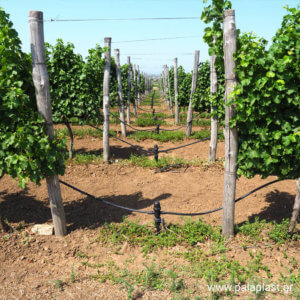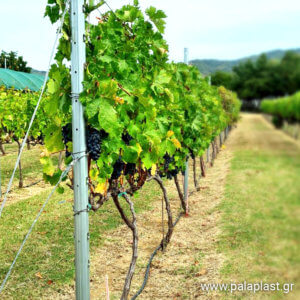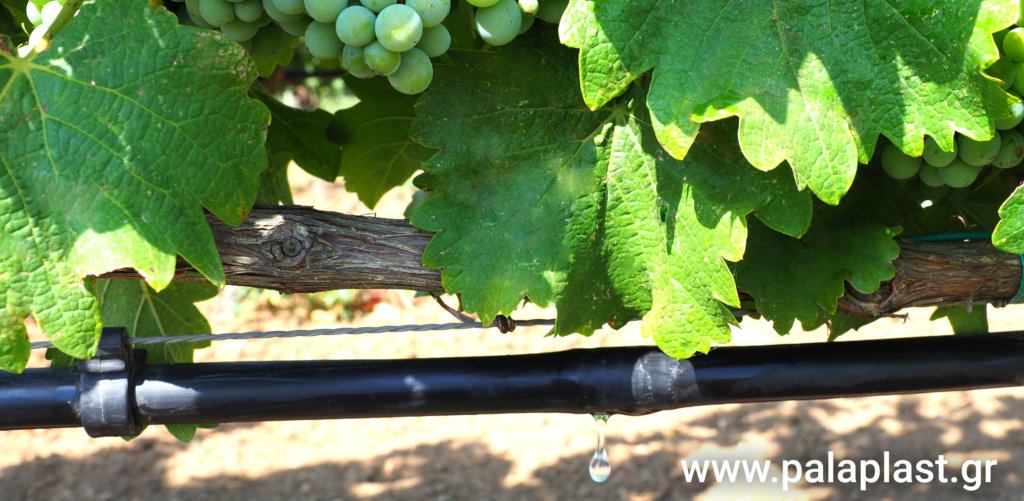
GRAPEVINE
(Vitis vinifera, Family: Vitaceae)
September, the beginning of autumn – also known as “Harvester”, is a peak month for grapevines and for the completion of harvesting. Grape harvesting, along with the pressing afterwards, has been one of the most important agricultural tasks since antiquity and an occasion for celebration, such as the Dionysian feast, dedicated to the god of wine Dionysus, which lasted for days and was accompanied by a large consumption of wine. Even today in many places, the beginning of the vine harvest is of importance and is accompanied by various customs and events.
IRRIGATION
Grapevines are amongst the plants that adapt to dry and warm soils, however the production of a sufficient quantity of quality grapes make it necessary for irrigation, with the exception of some specific traditional dry varieties.
The amount and frequency of irrigation is determined by a combination of factors:
- From the variety and requirements. In general, it can be said that wine grape varieties have less water needs than the table grape varieties.
- The type of soil and the retention capacity. It is worth noting that all the necessary water is absorbed by the root system of vine plants from a soil depth of 0-60cm, as the absorption capacity of the active root system reaches 60-80cm.
- From the annual rainfall. In total, the water needs of a grape range between 500-1200mm during the growing season.
- From the desired quality of the final product. Especially in the wine making varieties, the quality of the wine is also determined by the water that the plant receives, as this affects the ratio of the acid-sugar content of the grapes, which is one of the main factors of the quality of wines.
- From the season and mainly the vegetative stage of development. The water requirements of the vine plants vary between the stages of development.The water requirements begin to increase from the growth stage of the shoots, reaching a maximum during the growth stage of grapes, while they begin to decrease from the veraison stage to maturity. At this stage, additional attention is required to the amount of irrigation applied, as it can cause grapes to rupture, reduce the plant’s resistance to fungal diseases and possibly lead to quality degradation.Finally, after harvesting and in soils with low water capacity or in areas with high temperatures in the months of September-October, it is recommended to continue irrigation to maintain the photosynthetic activity of the leaves, increase of the roots and saving of carbohydrates and nitrogen in the stems, a procedure that increases resistance to cold winters and contributes to a smoother vegetation for the upcoming spring season.


In conclusion, it can be said that the application of irrigation in the vineyard should be rational, without exaggeration and always taking into consideration the cultivation needs of the variety and the local microclimate of the area. In so doing we avoid the risk of disease to the stems due to excessive soil moisture as well as rupture of the grapes during ripening, which functions as a gateway for pathogenic microorganisms.
Over the years the various irrigation methods that have been applied, have resulted in problems of plant protection and the consumption of large volumes of water, in periods where scarcity is characteristic.
In recent years, drip irrigation has prevailed, which provides water economy, application accuracy and the lower evaporation losses, while it can also be applied in soils with difficult topography. Furthermore, drip irrigation systems can be used for simultaneous fertilization, ensuring better control and higher efficiency in the application of nutrients. Finally, it limits the growth of weeds only on the irrigated surface of the soil and does not favor the development of fungal and entomological problems.
Palaplast has a wide range of products that can be used to install a reliable and sufficient drip irrigation system:
- Pressure Compensating Driplines (Paladrip-FC – Palaplast), Driplines (Paladrip – Palaplast, Paladrip-XL – Palaplast)
- Filters such us: In-Line Special – (Plastic Filters – Palaplast)
- Dripline Fittings – (Dripline Fittings – Palaplast)
- Micro Fittings such as: Supporting Hook, Super Supporting Hook (Micro-Fittings – Palaplast)



